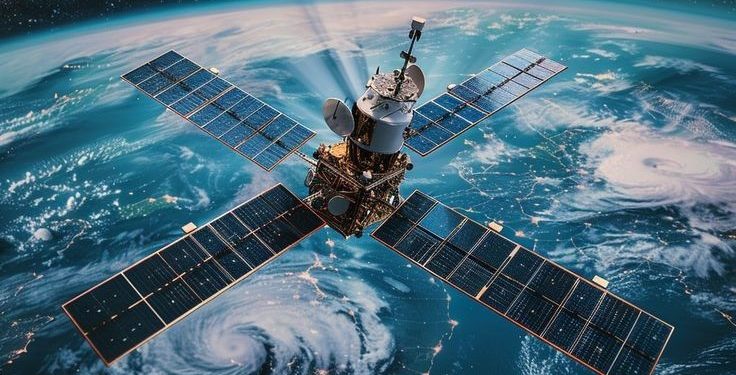Jakarta, Indonesia Sentinel — Chinese scientists has announced an ambitious space-based solar power (SBSP) project that could revolutionize global energy systems. The plan involves launching a massive solar power station in space to harvest solar energy and send it back to Earth.
The project has been dubbed “a space version of the Three Gorges Dam,” referring to China’s massive hydroelectric power station on the Yangtze River, currently the world’s largest, generating around 100 billion kilowatt-hours of electricity annually.
“This is as significant as moving the Three Gorges Dam to space,” said Long Lehao, the lead scientist on the project. He added that in a single year, a space solar power station could collect energy equivalent to all of the oil that could ever be extracted from Earth.
The Space-Based Solar Power (SBSP) project has the concept of gathering solar power in space and send it back to Earth using solar power satellites (SPS). The process involves converting solar energy into microwave radiation, which is then transmitted to Earth via fixed receiving antennas.
According to the Sustainability, the envisioned space solar power plant will span roughly one kilometer in length and operate in geostationary orbit or 36,000 kilometers (22,370 miles) above Earth. As in geostationary orbit, the structure positions remain fixed over a single point on Earth’s surface.
Its positioning in space allows it to avoid terrestrial limitations like weather disruptions and the day-night cycle, enabling constant exposure to sunlight. Scientists estimate the energy output from the station could be up to 10 times greater than that of conventional solar panels installed on the ground.
The power station will be built on Earth and launched into space aboard China’s next-generation heavy-lift rocket, the Long March-9. Once in orbit, the satellite is expected to begin harvesting and transmitting power.
Read Also:
Indonesia Expands Seafood Export Access to China, Secures Approval for 544 Processing Units
While groundbreaking, the project is still years away from realization. Engineers must tackle complex challenges, including designing robust heavy-lift rockets and assembling the enormous infrastructure in orbit. The timeline to complete the project and begin delivering power to Earth remains uncertain.
Despite the hurdles, scientist remains optimistic. “This is an extraordinary project to look forward to,” said Long Lehao.
China is not alone in pursuing this futuristic technology. U.S. aerospace giants Lockheed Martin and Northrop Grumman, the European Space Agency, and Japan’s space agency JAXA are also exploring space-based solar power. JAXA, in particular, is expected to launch a small proof-of-concept satellite later this year to test the feasibility of solar energy transmission from space.
If successful, space-based solar power could mark a pivotal shift toward clean, continuous, and globally accessible energy, pushing the boundaries of what’s possible in the age of climate-conscious innovation.
(Raidi/Agung)

























